8 Ways to Use Color Psychology in Marketing (With Examples)
[ad_1]
The hues you use in your advertising and branding are foundational. You will use these to generate your symbol, your internet site, your ads, and so a lot more—which means you shouldn’t make these alternatives flippantly. Alternatively, you really should decide on the shades you are likely to use in your branding and internet marketing strategically. How? The essential is knowing coloration psychology and applying the idea to your advantage.
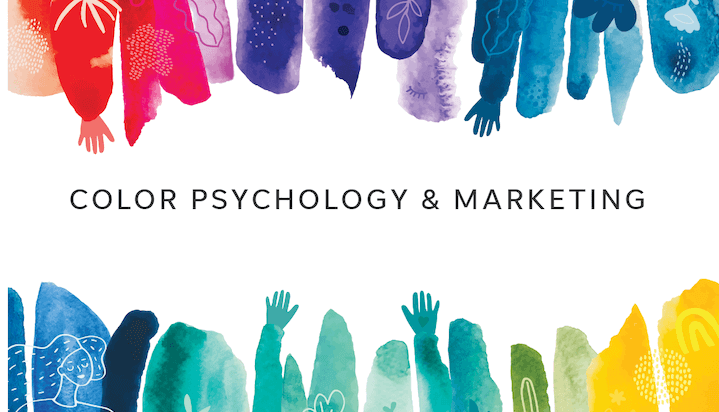
Let us get to it.
Table of contents
In this guide to knowing colour psychology and making use of it to boost your promoting resources, we’ll cover:
What is shade psychology?
Coloration psychology is the principle that specific shades elicit a bodily or emotional response and, in performing so, form human behavior. This is not rather as very simple as seeing pink and obtaining offended or seeing blue and sensation at ease—but almost. Clinical experiments suggest that the color red correlates to an boost in blood strain, and the colour blue corresponds with a decrease.
Simply because of this influence on behavior, shade can perform a huge function in producing a temper. In accordance to Architectural Digest, this helps make choosing the suitable paint hues important for placing the tone of your home. Heat colors are likely to energize, although amazing colours have a tendency to tranquil.
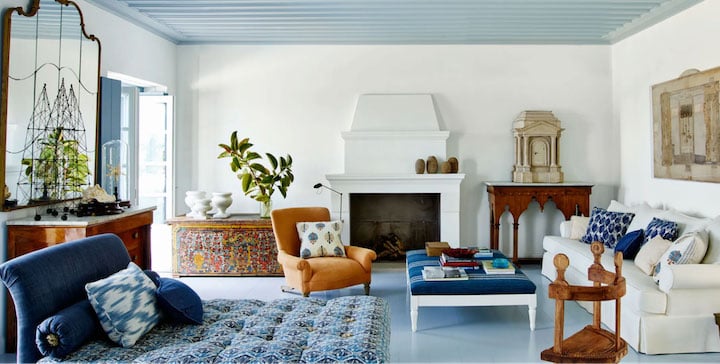
I do not know about you, but I’m experience calmer seeking at AD’s aspirational blue living area.
The psychology of colours has a similar affect when it arrives to your model and your advertising and marketing strategies, and this sales opportunities us to the up coming section.
Why does the psychology of color in internet marketing subject?
Shade can engage in a massive job in marketing—whether you’re spending attention to it or not. The colours that you use in your branding, like your emblem, and your other advertising collateral evokes an emotional response in your audience, irrespective of whether they notice it or not.
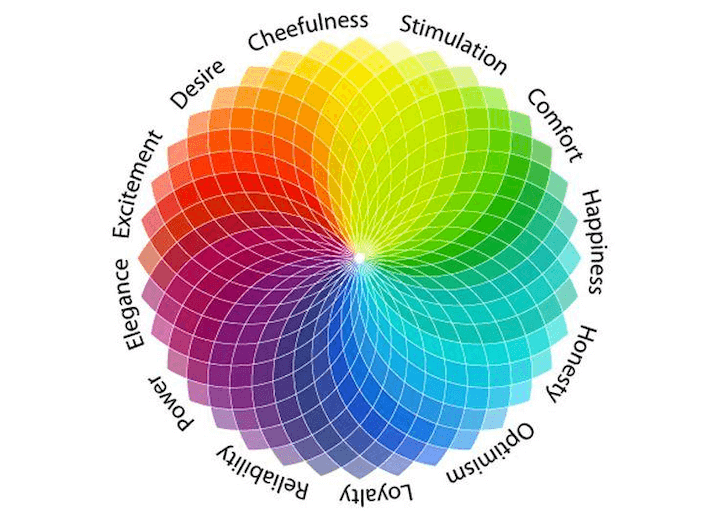
And as pointed out in our promoting psychology manual, we make conclusions based on emotion, not logic.
Bottom line: You need to have to contemplate color psychology when you’re setting up your manufacturer and generating your strategies.
How to use colour psychology to make improvements to your promoting
Now that we’re very clear on what the psychology of colour is and how influential using the ideal or improper hues can be in your advertising and marketing, here’s how to use color psychology to make your marketing even more efficient.
1. Find out colour psychology necessities
Familiarizing oneself with the principles can go a prolonged way toward using shade psychology in your marketing. We included previously how crimson can evoke heightened alertness or nervousness, though blue can have an adverse calming effect. Here are some more elementary shade associations to think about with your emotional advertisements:
- Purple: enjoyment, enthusiasm, anger, danger, action, panic, electricity.
- Orange: playfulness, friendliness, creative imagination, warmth, enthusiasm.
- Yellow: happiness, optimism, warning, pleasure, originality, enthusiasm.
- Inexperienced: Youth, vibrancy, vigor, nature, development, balance.
- Blue: Relaxed, balance, depth, peacefulness, rely on.
- Purple: Royalty, luxurious, romance, introspection, tranquil.
See how there are some overlaps. You’re not restricted to only a single color—or a single tone of that color—per emotion.
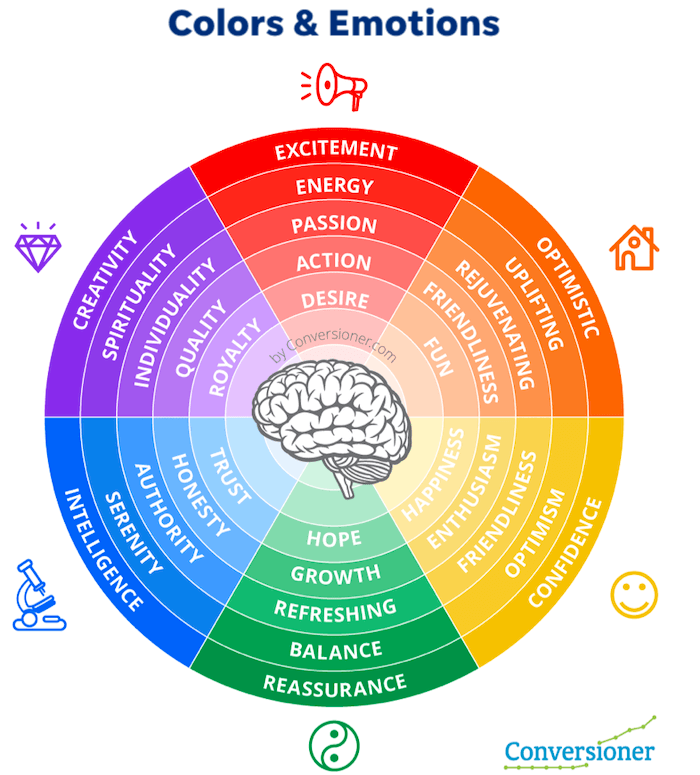
2. Begin with emotion first
No matter whether you’re rethinking your model colours or choosing on a palette for new advertisements, you want to start out with the emotion you want your audience to have. Must they answer with worry? Curiosity? Self-confidence? Use these emotional advertisement copy illustrations for inspiration.
Once you know the wanted result, make sure to pick the ideal color.
Choose this instance ad from a Lego marketing campaign with the tagline “Make your individual story.”
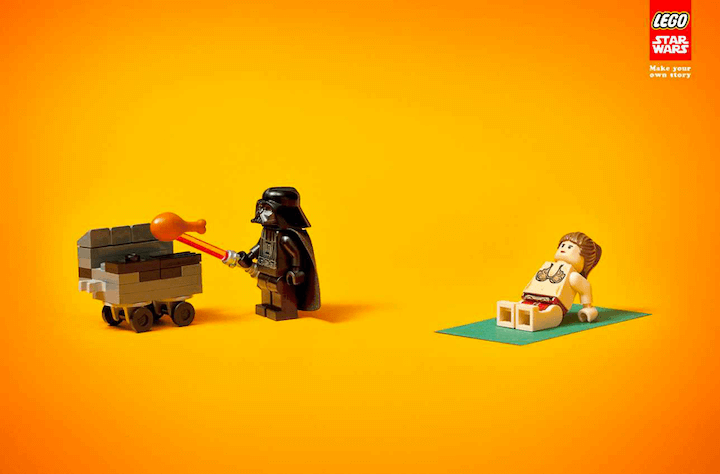
The advertisement demonstrates a Lego Darth Vader grilling with Leia sitting in the solar hanging out nearby. It is a playful scene with these Star Wars figures, dropping them into a everyday, exciting atmosphere to make a new story. It’s no speculate that the history is orange—an open, inviting color that conjures up creativeness.
3. Get inspired by other manufacturers
The greatest way to get far better at utilizing the psychology of coloration is to pay focus to ads, web-sites, and branding and how the shades make you really feel. Test out the site for Bloomscape, an ecommerce plant web site focusing on Millennial and Gen-Z individuals.

The forest green font and bar at the best toes the line in between earthy and stylish. The cream is a homey natural accent that pairs properly with the gentle peach, a warm, imaginative revision of Millennial pink. The wide range of greens is offset with warm terracotta pots, as effectively as the pink and orange accents on the vegetation. The impact can make me want to h2o and nurture my own plants, and possibly even invest in a succulent or two.
4. Hold it regular with your branding
When Web optimization business Reboot ran a research on emblem recognition, 78% of participants were being able to recall the most important color of the emblem though only 43% had been in a position to keep in mind the enterprise title.
If your audience remembers your brand name by its color, then you want to make positive it’s the exact and it’s everywhere. That is why keeping your colors constant with your branding is paramount, and the most thriving makes realize this. Keep in mind the Dunkin Donuts rebrand to Dunkin a couple yrs ago? All individuals graphic modifications, exact old but iconic color options.

Dunkin’ is a very good illustration because its branding is all above everything—with orange, pink, brown, as well as variations on these hues. It is the numerous shades and versions that (in most situations) retain your branding from becoming flat or two-dimensional. This leads us to the future tip—giving yourself the ideal palette to function with.
5. Build a manufacturer coloration palette
You want to hold the colors in your advertising dependable, but you really don’t want to be forgettably a single-observe. Worse, this could search spammy. The solution is to have a coloration scheme to do the job with that lets for some wide variety but sets some requirements.
So if you don’t by now have a brand name coloration palette, it is time to make one.
In this article are a couple of prevalent styles of shade palettes:
- Analogous: Hues subsequent to every single other on the shade wheel.
- Complementary: Reverse colours that make higher contrast.
- Monochromatic: Unique shades or tones of the same key shade.
If you’re seeking for some help coming up with the palette or some inspiration, check out the absolutely free design and style instrument Coolors. It incorporates instance pallets and can instantly make your individual centered on a starting off shade or even a photograph.

A monochromatic shade palette from Coolors.
6. Hold cultural context in brain
Notion of coloration isn’t universal. In fact, MIT scientists found that the text that we have and use to discuss about color differs by language. Some communities have a few shade groups, although other people have up to 12—a considerable selection in classes, just before even obtaining into specific hues.
It follows that psychology of shade isn’t universal then, possibly. That’s why it is essential to keep cultural context in head for your branding and internet marketing. Here’s an exceptional cheat sheet visualization to use as a starting up point:
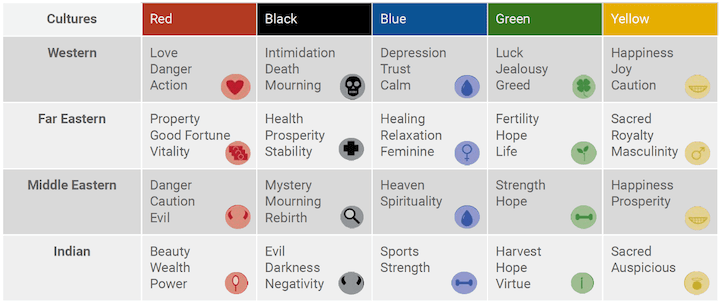
7. Attempt to add some blue
If you have gotten to this position and you are imagining that retaining keep track of of cultural context, sticking with a palette, and relying on the coloration psychology fundamentals is frustrating and impossible, really don’t fear. Getting versed in the fundamental principles and incorporating shade psychology into your advertising and marketing workflow is likely to take some time and some follow.
But in the meantime, here’s a brief rule of thumb: When in question, increase some blue.
It turns out that blue is the most well-liked preferred color across the globe. That may be 1 of the causes that some of the world’s most effective models have blue in their logos. Fb, Twitter, Vimeo, American Convey, IBM—the list goes on and on.
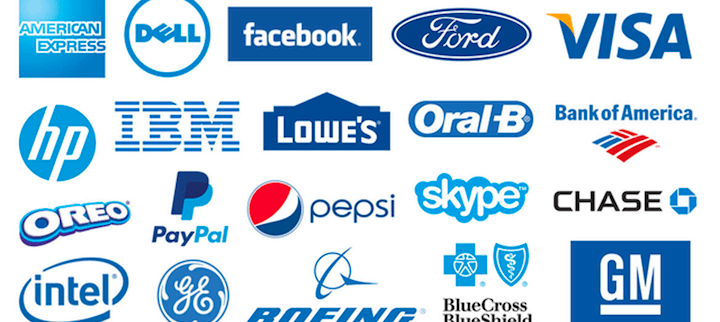
So if you’re looking for a shortcut or a certain thing, blue’s a safe and sound bet.
8. Run color exams with your audience
Now, this could possibly seem like I’m likely against every little thing ahead of. But the fact is that you just can’t usually predict how your viewers will reply to a sure color—let on your own specific shades, tones, or tints in your color palette. Which is in which A/B testing arrives in. Check out testing two different colour backgrounds in your adverts or buttons on your website and see which your viewers prefers.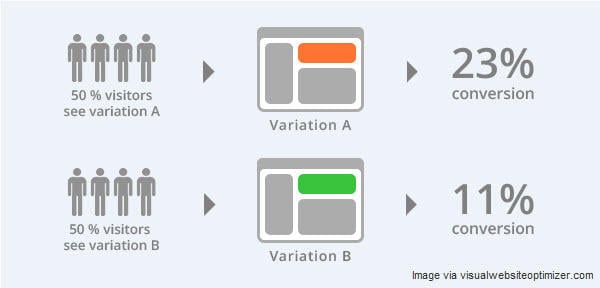
Then use that details. Which is the very best way to leverage shade psychology to make improvements to your marketing and advertising. Test—and retain testing.
Make shade psychology work for you
It’s crucial to don’t forget that colour psychology will impact your advertising and marketing, period. Your audience will make judgments about how nicely your manufacturer shades go well with your organization. They will respond to a crimson or environmentally friendly or blue button far more swiftly. This will happen regardless of whether you are paying out focus to the psychology of shade throughout your branding or advertising structure.
Improved to use it to your benefit. Here’s a fast recap of the techniques you can use to make coloration psychology operate for you and your marketing and advertising ambitions:
- Study colour psychology essentials
- Commence with emotion very first
- Get inspired by other makes
- Make a model colour palette
- Continue to keep cultural context in brain
- Attempt to add some blue
- Stay consistent with your branding
- Run color tests with your audience
Excellent luck!
[ad_2]
Supply backlink
